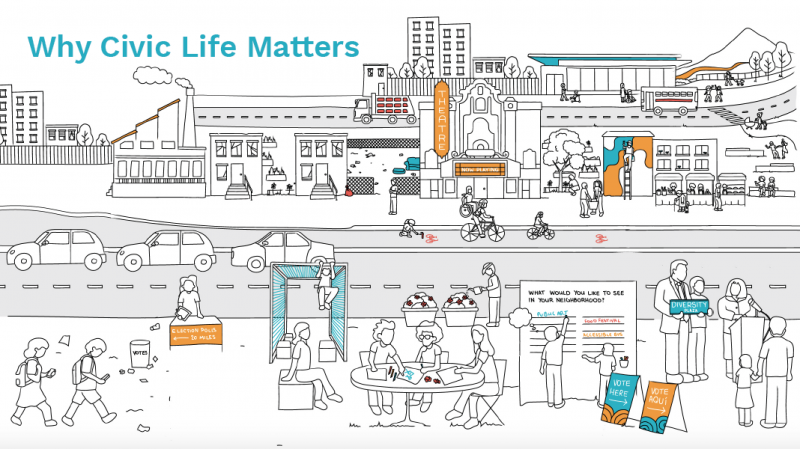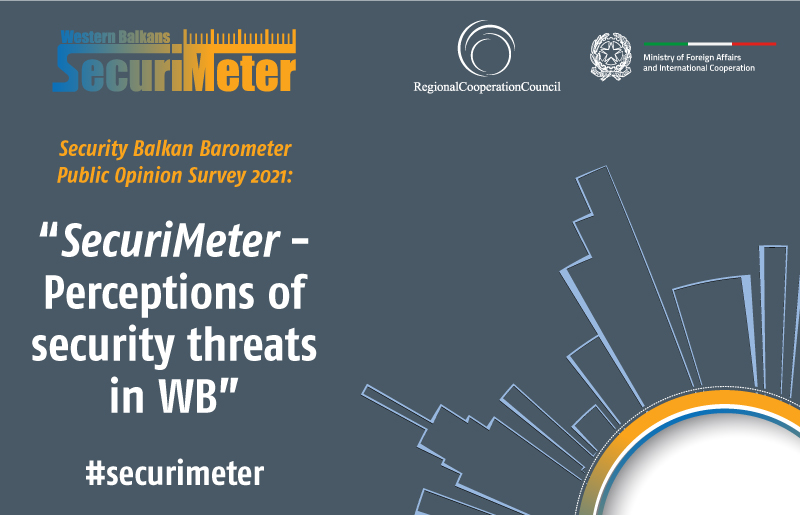- Home/
- News
A Community Effort: How Communal Isolation Contributes to Radicalization
In recent years substantial effort has been made in the areas of cybercrimes and cybersecurity, with a special focus on combatting extremist online propaganda from influencing and subsequently radicalizing youth into joining extremist groups, such as ISIS. Security agencies, internationally, and specialized academics have indicated that it is not merely a matter of averting youth from online extremist propaganda but creating and promoting a counter-narrative to prevent youth radicalization from occurring. Even while considering the pertinent nature of the question raised by Nikita Malik, in her Forbes article, “Who Has The Power To Regulate Extremist Content on the Internet?”, the offline space can be neglected, yet it is here that crucial power dynamics, notably the role of communal isolation, play out in the radicalization of Muslim youth.
The case of Shamima Begum, for example, has been looked at, perhaps exhaustingly so, through the lens of the effects of her choice to travel to Syria to join Daesh. There has indeed been plenty of insights and perspectives written on her situation and the current judicial factors. However, there has been much less earnest attention and investigation into the affects which caused her to feel an attachment or connection, prior to her physical departure to ISIS occupied territory. While asked in a recent Sky News interview, “what was it that prompted a 15-year-old girl to go to Syria?” Her response was: ‘videos online attracted me to them’… “like it attracted a lot of people”. This leaves the obvious question to be asked, why did these videos — often explicitly gruesome — make Shamima and numerous Muslim youths sympathize and connect with the objectives of Daesh?
‘Communal isolation’, whereby groups and individual members thereof, specifically youths, are isolated within traditions and customs of their communities, often taking an orthodox tone in practice, whilst not being able to or ‘permitted’ to have social mobility beyond on the confines of the community, certainly plays a role in youth radicalisation. This ‘communal radicalization’ poses a clear concern than for inter- and intragroup networking, creating a limited single-group-oriented framework of identity, and limited social network of peers, producing a singular isolated perspective on issues and matters inside (communal inwardness) and outside (societal outwardness) the community. Acting, hence, as a catalyst for Islamist influences and mobilization. The influencing power of community, as power itself is value neutral — think Nelson Mandela or Augusto Pinochet — can be either a positive or negative force.
Positive Force
The community engages in the wider society and encourages its members to do the same, pursuing individual interests outside the community and becoming involved in activities and events which broaden their perspectives, and allows individuals of the wider society and other communities, be to involved with the activities of their community. Based in openness and diverse cultural interactions, and the shared exchange of ideas, histories, and customs. Holds the view that community and society participation- humanistic solidarity- are equally important and mutually beneficial. Simultaneously realizes that community members-human beings-are not limited things but are ‘spherical beings’-always becoming more in terms of identity. A true multicultural experience.
Negative Force
The community thinks inward, in terms of ‘what is best for the community’, partitioning itself and its members off from greater social interactions in the wider society-’societal outwardness’, by means of ‘collective oligarchy’-community members acting as an inward force against fellow members to prohibit or limit social and personal experiences, views and beliefs from forming outside the community. Holds an ‘us’ and ‘them’ mentality in relation to the greater society. A fundamental crisis of identity among members, due to group dynamics: religion, community, family, and self-identity. Straying from the values and dynamic of the community, members risk shunning and alienation. Radical views and extremist tendencies are not seen as such, due to the isolative structure of the community- the ‘this is how I was raised’ narrative.
Focusing on the latter, one becomes aware of how a non-existent or restricted ‘societal involvement’, that is, participation in and the forming of social links outside of the community, fosters, as Brandon Sparke states, “a person’s behaviour and critical judgment largely becomes a function of group dynamics”.[1] This ‘communal-culture’ engulfs its members, collectively, in a distinct and unalterable set of behavioural ethics and moral standards, that result from the interwoven link of religion, community, tradition, family, and how one identifies in relation to them, which are perpetually reinforced through internal inward pressures via the ‘negative force’. Arguably, as the current rise over recent years will attest, Muslim youth are at greater risk to experience the effects of, or themselves be, ‘communally radicalized’. Which, although a necessary condition for, may not leading to violent extremism.
However, Muslim youth who experience communal isolation, will either be victims of it, as in the case of British-Iraqi Kurdish woman, Banaz Mahmod, who was, through tightknit traditions within a family/community nexus- an extension of in loco parentis, shaping a symbiotic relationship integrating identity and shared group memberships- murdered by ‘honour killing’ in 2006. The reason: she refused to have this nexus dictate her actions, controlling who she saw and where she went. Consequently, Banaz was a victim of violent extremism brought about from within a radicalized family/community nexus. Her case is an exemplar of community as a ‘negative force’. Understanding this radical symbiotic relationship is vital to PVE methods, in countering the spread of and, potentially evolving violent extremist religious ideology in isolated communities.
The other resulting effect is that youths cannot disengage themselves from the behavioural ethics and moral standards in conjunction with the group dynamics imposed by the community, thus constructing a complex albeit singular framework of ‘how’ and ‘with who’ they identify. As such, youth become exceedingly vulnerable to pre-existing group-oriented Islamist ideologies in their community,[2] potentially having that vulnerability systematically exploited by rhetoric of Islamist members of the community on issues pertaining to, otherwise legitimate historical grievances, through “a narrative of self-pity, aimed at underlining the injustices that Muslim people face, whether in Muslim-majority countries or in Europe.”[3] In other words, within this limited social sphere of the communal isolation, the combination of said exploitation and pre-existing ideologies, and group dynamics, and the behavioural and moral constraints, establishes a self-contained environment where youth radicalization not only occurs, but may very well be perceived as ‘normal’ in the context of community structure and milieu.
Solutions
Contrary to the intent of the popularized term, ‘community engagement, whereby the ‘outward’ socio-political structure engages with socio-political ‘inward’ structure of the community, it is rather the case that the community must also engage outwardly in greater public and ‘societal involvement’. Both engagements/interactions between these structures are required in the prevention of radicalization and collective acts of violent extremism. Promoting the ‘positive force’ as a system of PVE in countering youth radicalization, will deter influencing capacities of extremist propensities fostering communal radicalization of Muslim youth, acting as a catalyst in intragroup connections with extremist groups like Daesh. Therefore, dismantling the reinforced structural ‘norms’ of communal isolation, through counter narratives, plays a critical role in discrediting extremist interpretations and Islamist rhetoric. Thus, creating pathways for societal involvement of Muslim youth, on local and federal levels, ensures the formation of greater social bonds, outside the community.
_______________________________
REFERENCES
[1] Sparke, Brandon. 2019. “The religious vs. social radicalisation debate: current understandings and effects on policy.” Journal of Policing, Intelligence and Counter Terrorism 14 (1): 82-96.
[2] Verkuyten, Maykel. 2018. “Religious Fundamentalism and Radicalization Among Muslim Minority Youth in Europe.” European Psychologist 23: 21-31.
[3] Brzuszkiewicz, Sara. 2018. “Radicalisation in Europe after the Fall of Islamic State: Trends and Risks.” European View 17 (2): 145–54.
Author: Mathew Giagnorio, researcher in preventing and countering violent extremism
Source: Link



 Development of specialized PCVE web site is funded by EU FUNDS CN 2017-386/831 - "IPA II 2016 Regional Action on P/CVE in the Western Balkans"
Development of specialized PCVE web site is funded by EU FUNDS CN 2017-386/831 - "IPA II 2016 Regional Action on P/CVE in the Western Balkans"